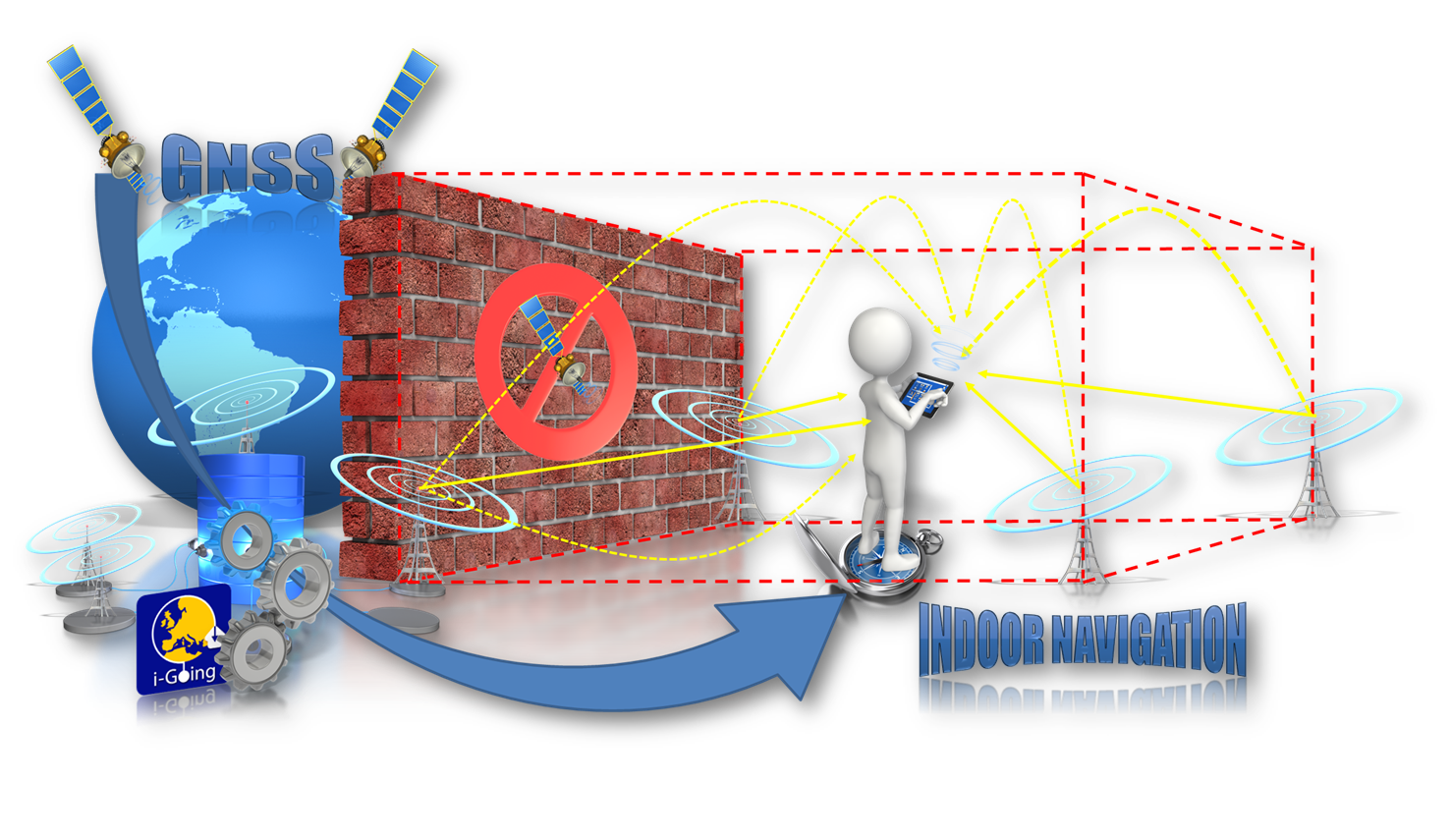Project details
Indoor navigation
i-GOing develops a service that generates specific indoor signals by making use of a network of pseudolites, which are installed inside buildings and are connected to a localisation server that manages them. The mobile receivers will correlate those signals, compute a pseudorange per antenna and send that information back to the localisation server. The localisation server indicates the mobile devices their position in a predefined, downloaded map of the building.
Several innovative techniques based on GNSS technology need to be carried out to make indoor services easily accessible to a mass market. Near-far effect: acquisition/tracking algorithm and multipath mitigation.
The development of a Galileo pseudolite prototype is a key part of this project which will allow providing real measurements and demonstration of the results on Galileo signals. To evaluate the performance of the system, there will not only be technical evaluation undertaken in laboratories, but live testing as well.
In addition to the fact that the project provides its partners with technical and commercial advantage, it is highly probable that the Galileo pseudolite component will become the leading technology in the scope of an EC work plan dedicated to indoor LBS.
Standardisation issue
Due to the use of GPS L1 signal in aeronautical applications, we do not expect to receive regulatory approval for mass deployment of GNSS pseudolites in this band without dedicated authorisation requiring specific analysis. The innovative component of i-GOing is a smart implementation of indoor services in the E6 band, which are allocated to the Galileo service, but are free from aeronautical links and ease the modification of chipset manufacturers with a technology closely related to Galileo outdoor signals.
In the meantime, tests will be performed on the ISM frequency band (2.4 GHz).




